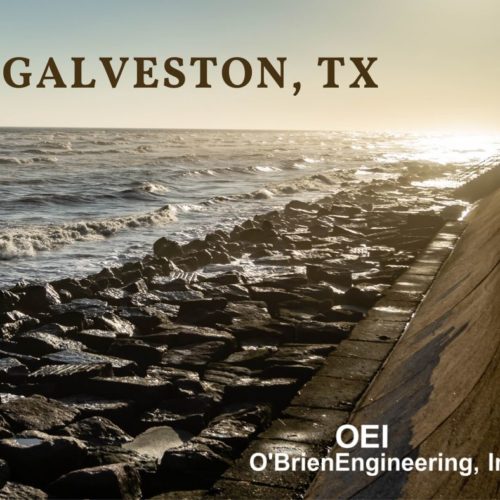
Galveston Seawall Grade Raising Project
This week in engineering history ASCE recognizes the Galveston Seawall and Grade Raising project completed in 1911. A board discussed and approved the need for a seawall after a devastating hurricane hit Galveston Island on September 8, 1900. This storm is one of the greatest natural disasters in American history. With the loss of almost 14 percent of the island’s population and tens of millions of dollars in damage a solution to prevent another disaster was a top priority.
The article states, “Using pioneering materials and methods, civil engineers designed and built a concrete seawall on Galveston Island and raised the island’s elevation to prevent future natural disasters…”
The grade raising of Galveston provided support for the seawall but also helped with drainage and other infrastructure. ASCE reported, “Materials used in constructing the original seawall included 5,200 railway carloads of crushed granite; 1,800 carloads of sand; 1,000 carloads of cement; 1,200 carloads of round wooden pilings; 4,000 carloads of wooden sheet pilings; 3,700 carloads of stone riprap; and 5 carloads of reinforcing steel.”
The impressive Galveston Seawall stands the test of time by daily facing the challenges of water, salt and sand erosion and withstanding hurricanes for more than 100 years.
O’brien Water Resource Services
With over three decades of experience OEI is a leading water resource management firm with an extensive list of completed projects controlling water flow in partnership with many public and private agencies. O’brien water services include:
- Dam and levee design
- Analysis
- Modeling
- Dam and levee rehabilitation and safety
- Bank stabilization
- Erosion control
- And more
By understanding the signs of critical failure and how to implement rehabilitation plans OEI can successfully lessen the risk of damage. Our O’brien water team also understands and easily navigates complex permitting processes. Contact us today to begin the process of more effectively managing your water resources and mitigating risks through proper design, rehabilitation, and maintenance.
